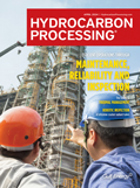Construction
Enhanced reboiler for C3 splitter heat pump improves energy efficiency and reduces CO2 footprint
Energy efficiency, carbon dioxide (CO<sub>2</sub>) footprint reduction and the minimization of material requirements are becoming key drivers of our daily decisions in all industry sectors.
Utilize heavy-duty cable tray systems to improve cable tray designs
This article presents a novel design concept that utilizes a heavy-duty cable tray system to optimize cable tray design, procurement and construction.
Construction pitfalls in SRU-fabricated equipment
In the hydrocarbon processing industry, sulfur recovery is a well-known process. However, this process uses a variety of equipment.
Piping interface type selection
Most oil and gas process plant projects involve multiple work packages executed by different lump sum turnkey (LSTK) contractors executing work within their own package, with a final piping interface connection at an agreed boundary limit to accomplish the interface joint between two parties and successfully close the piping interface.
Productivity in process plant engineering: Aspects and examples
For centuries, division of labor has been the recipe to improve productivity—dividing an organizational set of tasks into smaller tasksets, as assigned to individuals.
HP Flashback: Operations, processes and safety evolve and advance: Excerpts from the 1930s
The following is a mixture of technical articles, columns and headlines published in the 1930s by <i>The Refiner and Natural Gasoline Manufacturer</i>, the forerunner to <i>Hydrocarbon Processing</i>.
History of the HPI: The 1930s: Catalytic cracking, polyethylene, synthetic fibers, resins and jet engines
The hydrocarbon processing industry (HPI) has a rich history of discovery, challenges, breakthroughs, trial and error, collaboration and success. <i>Hydrocarbon Processing</i> continues its reflection on the history of the HPI.
Executive Viewpoint: What is the future for the HPI?
<i>Hydrocarbon Processing</i> sat down with Helion Sardina (HS), Chief Commercial Officer, Lummus Technology.
Industry Perspectives: Capital investments/major trends affecting the global HPI
In late January, Tyler Campbell, Associate Editor, <i>Hydrocarbon Processing</i>, <i>Gas Processing & LNG</i>, and <i>H2Tech</i>, presented an update on the global capital construction landscape at the Engineering and Construction Contracting (ECC) Extra Conference in New Orleans, Louisiana (U.S.).
Impact of biofeed retrofits, coprocessing on refinery amine units, SWSs and SRUs—Part 1
Diesel with a portion of biologically sourced carbon is being produced at an increasing number of conventional crude oil refineries.

- Pakistan-China to sign MoU on oil-to-chemicals complex in June 5/17
- China biofuel makers bet on sustainable aviation fuel 5/17
- AMETEK Land provides thermal imagers to large ethylene producer 5/17
- China's refinery output falls for first time in 20 mos due to maintenance 5/17
- Dow, SCG Chemicals sign MoU to transform 200,000 tpy of plastic waste into circular products 5/17
- Ukraine long-range attacks continue to disrupt Russian refining, energy operations 5/17




